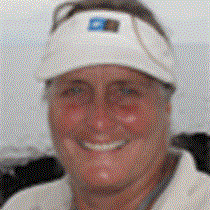Española Island
We had another marvelous and busy day today! After lavishing in a bit of a lazy start to the morning, with breakfast at 8:00am, there were options of kayaking, snorkeling and beach time. Later we offered a second round of kayaks and practically everyone ended up on the mile long beach of fine white sand where there was time to relax, swim, stroll, and study the sea lions or make one out of wet sand. Cheeky mocking birds, this species endemic to this one island, hopped among and around us and pecked at out towels and back packs. Gardner Beach was an idyllic spot and we were hesitant to climb into the Zodiacs and return to the ship at noon.
For the afternoon at Punta Suarez, we had two choices: a two mile hike over lava boulders to the nesting area of the waved albatross or a panga ride around the point to see the blow hole. We offered a kid’s hike today, as the young folks were faster over the rocks than their parents and they wanted to be together one last time. All the hikers had an amazing walk, first passing resting sea lions and marine iguanas on a series of small beaches, and then proceeding through Nazca and blue-footed booby nesting grounds to an overlook of the blowhole. The tide was high, the surf was up and the blowhole was shooting spray 70 feet into the air!
Pairs of albatross were incubating and others were doing snatches of their elaborate courtship displays. Dozens of these big birds – whose wing spans may reach to 7 feet - soared along above the high cliffs that they use to take off. They nest among the lava boulders and landing here can be a problem. No chicks have yet been seen this year along the visitor’s trail, but we expect to find the first hatchling anytime now.
Some of us found a dove’s nest – surprising out in the open on the ground – and one of the parent birds was keeping the naked chick warm. Doves usually hide their nests among the rocks and in shallow caves so it was a treat to find this one.
Those who joined me for the panga ride enjoyed a cool breeze and were escorted as we traveled on a deep blue ocean by several species of sea birds: Galápagos shearwaters, band-rumped storm petrels, two species of boobies, red-billed tropic birds and the waved albatross. We had a great look from the sea side of the blow hole, and by the time the sun set, we were all back on board – even the teens who had gone out for one last fast and splashy panga ride with panguero Henry.
We had another marvelous and busy day today! After lavishing in a bit of a lazy start to the morning, with breakfast at 8:00am, there were options of kayaking, snorkeling and beach time. Later we offered a second round of kayaks and practically everyone ended up on the mile long beach of fine white sand where there was time to relax, swim, stroll, and study the sea lions or make one out of wet sand. Cheeky mocking birds, this species endemic to this one island, hopped among and around us and pecked at out towels and back packs. Gardner Beach was an idyllic spot and we were hesitant to climb into the Zodiacs and return to the ship at noon.
For the afternoon at Punta Suarez, we had two choices: a two mile hike over lava boulders to the nesting area of the waved albatross or a panga ride around the point to see the blow hole. We offered a kid’s hike today, as the young folks were faster over the rocks than their parents and they wanted to be together one last time. All the hikers had an amazing walk, first passing resting sea lions and marine iguanas on a series of small beaches, and then proceeding through Nazca and blue-footed booby nesting grounds to an overlook of the blowhole. The tide was high, the surf was up and the blowhole was shooting spray 70 feet into the air!
Pairs of albatross were incubating and others were doing snatches of their elaborate courtship displays. Dozens of these big birds – whose wing spans may reach to 7 feet - soared along above the high cliffs that they use to take off. They nest among the lava boulders and landing here can be a problem. No chicks have yet been seen this year along the visitor’s trail, but we expect to find the first hatchling anytime now.
Some of us found a dove’s nest – surprising out in the open on the ground – and one of the parent birds was keeping the naked chick warm. Doves usually hide their nests among the rocks and in shallow caves so it was a treat to find this one.
Those who joined me for the panga ride enjoyed a cool breeze and were escorted as we traveled on a deep blue ocean by several species of sea birds: Galápagos shearwaters, band-rumped storm petrels, two species of boobies, red-billed tropic birds and the waved albatross. We had a great look from the sea side of the blow hole, and by the time the sun set, we were all back on board – even the teens who had gone out for one last fast and splashy panga ride with panguero Henry.




